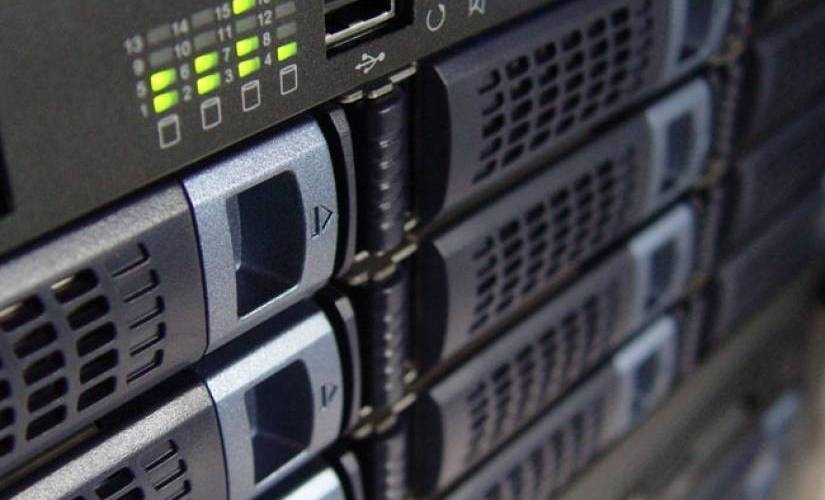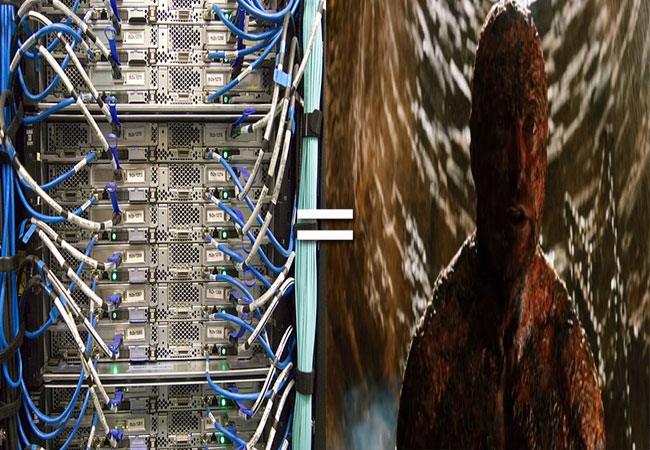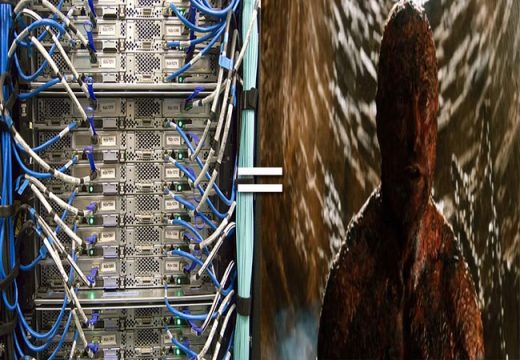Resisting and Reducing Enterprise Storage Downtime
Resisting and Reducing Enterprise Storage Downtime

Downtime for an enterprise is the same as getting knocked out cold. The downtime is the inability to access essential data for extended periods is like getting an arm or a leg chopped off for an enterprise. Enterprise system downtime can cost millions in losses and lead to reputation damage, loss of business, and a lot of angry customers. Is it possible for an enterprise to recover from such losses? Often, the answer is “no.” Resisting and reducing enterprise storage downtime is essential.
In this article, we discuss how can organizations resist and reduce enterprise storage downtime.
What Threatens Your Enterprise Storage Systems?
When you think about the threats to enterprise data storage systems, the first thing that pops into your mind is probably ransomware. It’s logical to believe that ransomware is perhaps the biggest reason why businesses lose their data and experience downtime. But what do you know about data recovery?
Ransomware is a frequent re-occurrence in the daily news. Recently, it attacked several cities taking down city departments, disrupting numerous necessary local departments and affecting daily lives.

Atlanta, Baltimore, Florida City, are some of the recent ransomware attack victims. While ransomware is one of the more publicized threats, it’s not the only threat to enterprise data storage systems.
Causes of Enterprise Storage Downtime – Besides Ransomware
-
Hardware Failure:
Server crash, drive failure, power supply failure, network switch failure, network bottlenecks, etc. are involved in hardware failures.
-
Power Failure:
Power outage or loss of electrical power to the storage systems.
-
Accidental / Malicious Deletion:
Accidental deletion, also a part of human error, is when IT staff unintentionally delete a file or data volume.
Malicious deletion is usually experienced when a disgruntled employee is fired or leaves the company.
-
Software Malfunction:
Update failure, software crash, and rogue updates are referred to as software malfunction.
-
Human Error:
Apart from accidental deletion, this includes incidents where IT staff incorrectly configure privacy settings or forget to run updates and other similar instances. One good example would be how the Pentagon ended up exposing confidential data because it was made publicly available on AWS cloud instead of being configured as privately accessible.
Statistics suggest that human error accounts for 22% of enterprise system downtime. So ransomware is not the only threat, but there are a couple of others. But how damaging can enterprise storage downtime be? Let’s look at some numbers.
What Extent of Damage Are We Talking About?
It’s difficult to put a number of the losses incurred by enterprise storage downtime. That’s because the loss varies on a case-by-case basis. How many losses a business experienced due to downtime? It depends on the business type, and on how much the business depends on their data.
A report by Gartner puts the average cost of downtime to $ 5600 per minute to $ 300,000 per hour in web application downtime.

From 2017 to 2018, 24% of enterprises worldwide had to endure $ 300,000 to $ 400,000 per hour in losses due to downtime. (Source: Statista) But what’s the cost of system downtime for your business? Here’s a formula to help you with the numbers.
Lost Revenue = (GR/TH) x I x H
GR = Gross yearly revenue
TH = Total yearly business hours
I = Percentage Impact
H = Number of hours of outage
The numbers establish that downtime is the same to an enterprise as cutting an arm or a leg is to a human. But businesses such as: Wolverine or Deadpool can help you recover from fatal damage. Can your data storage systems have the same power? Yes, they can — but you have to plan ahead. The help doesn’t happen on its own.
How Can Your Enterprise Storage Systems Recover Fast?
There are a number of ways businesses can recover from downtime. For example, cloud backup, dedicated backup appliances, and online backup solutions are some of them.

Look for solutions to recoverability. If you’re a fan of the mutant with claws and high regeneration, you know that he heals almost instantly, (Wolverine). How can enterprise data storage systems do that? Considering enterprise data storage systems have TeraBytes to PetaBytes of data — your solution can be quick.
Actually, it can.
For enterprises looking to recover within minutes, the go-to recovery solution should be a redundant hyper-converged backup and Disaster Recovery (DR) solution.
What are Hyperconverged Backup and Data Recovery Solutions?
Hyperconverged backup and data recovery (DR) solutions combine network, compute, storage, backup software, and a virtualization engine (hypervisor) in a single solution. There are many enterprise-grade hyper-converged backup & DR solutions available in the market. However, it’s tricky to find one vendor that offers everything.
For instance, Dell, HPE, Nutanix, offer hyper-converged storage infrastructure. However, neither has a backup solution to go with it. Therefore, users need to purchase third-party backup software with them. Things get complicated when you’re looking for hypervisors. Dell, HPE support Microsoft Hyper-V and VMware hypervisors and several others, but they don’t have their own hypervisor. Meaning, if businesses choose to purchase hardware from them, here’s what they have to go through:
- Acquire the hardware from Dell, or HPE
- Purchase hypervisor licenses from Microsoft Hyper-V or VMware
- Deploy backup software from another third-party service provider
And then, of course, is the final task of combining everything and creating one large enterprise system — it’s pretty tricky.
A simple way to do it is to look for a backup and DR solution provider who can offer you everything that you need. One such vendor is StoneFly Inc. Instead of getting different components from different vendors and then doing everything, StoneFly does everything and offers turn-key hyper-converged backup and Data Recovery solutions.
How Hyperconverged Backup and Date Recovery (DR) Solutions Help with Enterprise Storage Downtime?
Hyperconverged solutions enable users to run applications, hosts, and mission-critical workloads as Virtual Machines. In the event of primary data storage system failure, users can spin up VMs directly on their hyper-converged backup and DR solution. Using the system directly saves time and reduces downtime considerably. By focusing on the data recovery of mission-critical workloads, businesses can recover faster.
Main operations come back online a lot quicker, the rest of the workloads recover in time. Recovering in time is the primary purpose of disaster recovery solutions. Features like Instant VM recovery, Full VM recovery, One-click recovery, are ideal for this use-case. The ability to spin up directly on the backup appliance and the above-mentioned features depend on the acquired solution and the backup software. Therefore, it’s recommended to ask the right questions before making the purchase.
Other Features to Look For in Reliable Backup and DR Solutions
These are much-needed features of an excellent hyper-converged backup & DR solution. Other features to look for in a reliable backup & DR solution include:
- Synchronous or Asynchronous Replication
- Snapshot
- Encryption
Synchronous Replication
Synchronous replication enables users to create real-time replicas of pre-assigned data volumes at designated storage repositories. These repositories can be in the on-premises backup appliance, in an offsite device, or the cloud.
Asynchronous Replication
Asynchronous replication allows enterprises to schedule the creation of replicas of pre-assigned data volumes at designated storage repositories. Similar to synchronous replication, these repositories can be in the on-premises backup solution, in an offsite appliance, or in the cloud.
Encryption
Encryption effectively ensures data security for enterprise workloads. Even if the data is in a private network, on an appliance with restricted access, encryption helps make sure data is away and secure from the “wrong” people. If it’s a cloud-enabled backup solution, then it’s essential to look for encryption that secures data at rest, during transit, and after transit.
Snapshots
Snapshots are images of a system’s state in time. They record the condition that a system is in. The situation that the system is in will include the data that has been stored, installed or deleted applications, created files, videos, images, etc. Snapshots consume very little space, especially when compared to replication. With image-based snapshots, enterprises can recover from data loss, data corruption, and ransomware attacks.
Are Hyperconverged Backup and DR Solutions the Only Way to Resist Downtime?
No, they’re not the only way, but they are one of the best ways to do so. What other options do enterprises have to resist downtime? Here are some different ways to “regenerate” from downtime.
- Cloud Backup and DR: Create backups in clouds like Azure or AWS and in the event of hardware failure, ransomware attack, or data corruption, recover from the cloud backups and turn the lights back on for your business.
- High Availability Data Storage Systems: High Availability (HA) infrastructure helps ensure business continuity and reduced downtime, but how vendors incorporate offer HA for their storage systems varies.
For instance, StoneFly’s approach to HA infrastructure is that we offer disaggregated hardware along with redundant components in the equipment. Base HA configuration uses disaggregated storage controllers and RAID arrays. Each storage controller and RAID array has redundant power supplies and support features that make the system fault-tolerant.
HA infrastructure helps remove a single point of failure from enterprise data storage systems. Thus significantly reducing the possibility of enterprise storage downtime.
3-2-1 Rule: The 3-2-1 rule is a data protection strategy that guarantees greater availability for mission-critical enterprise workloads. The rule is that an enterprise must have three copies of data, stored on at least two storage media with one of them offsite, and this is accomplished in numerous ways.
For instance, using a cloud-enabled solution helps enterprises create multiple copies of data, store them in different storage media, and one of them is offsite. Learn more about the 3-2-1 rule.
Conclusion
Outages, with its resulting downtime is bad for enterprises. The best way to make sure that organizations keep running is to employ hyper-converged backup and DR solutions. Hyperconverged backup and DR solutions give enterprise data storage systems regenerative abilities like the Wolverine.
To make sure that enterprise data storage systems don’t come to a screeching halt, it’s always good practice to use high availability, fault-tolerant, and redundant storage solutions.
The post Resisting and Reducing Enterprise Storage Downtime appeared first on ReadWrite.
(35)



